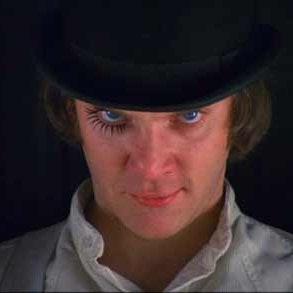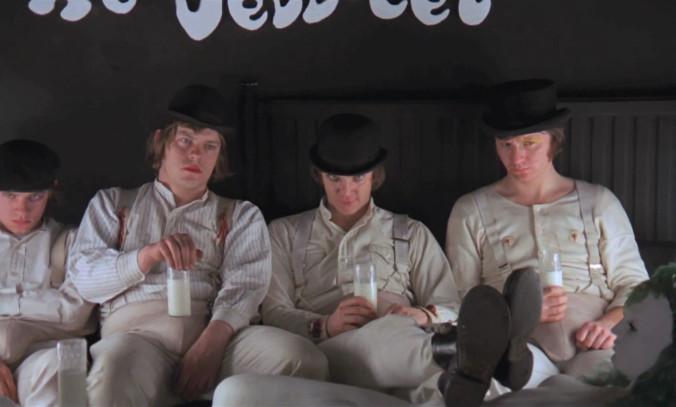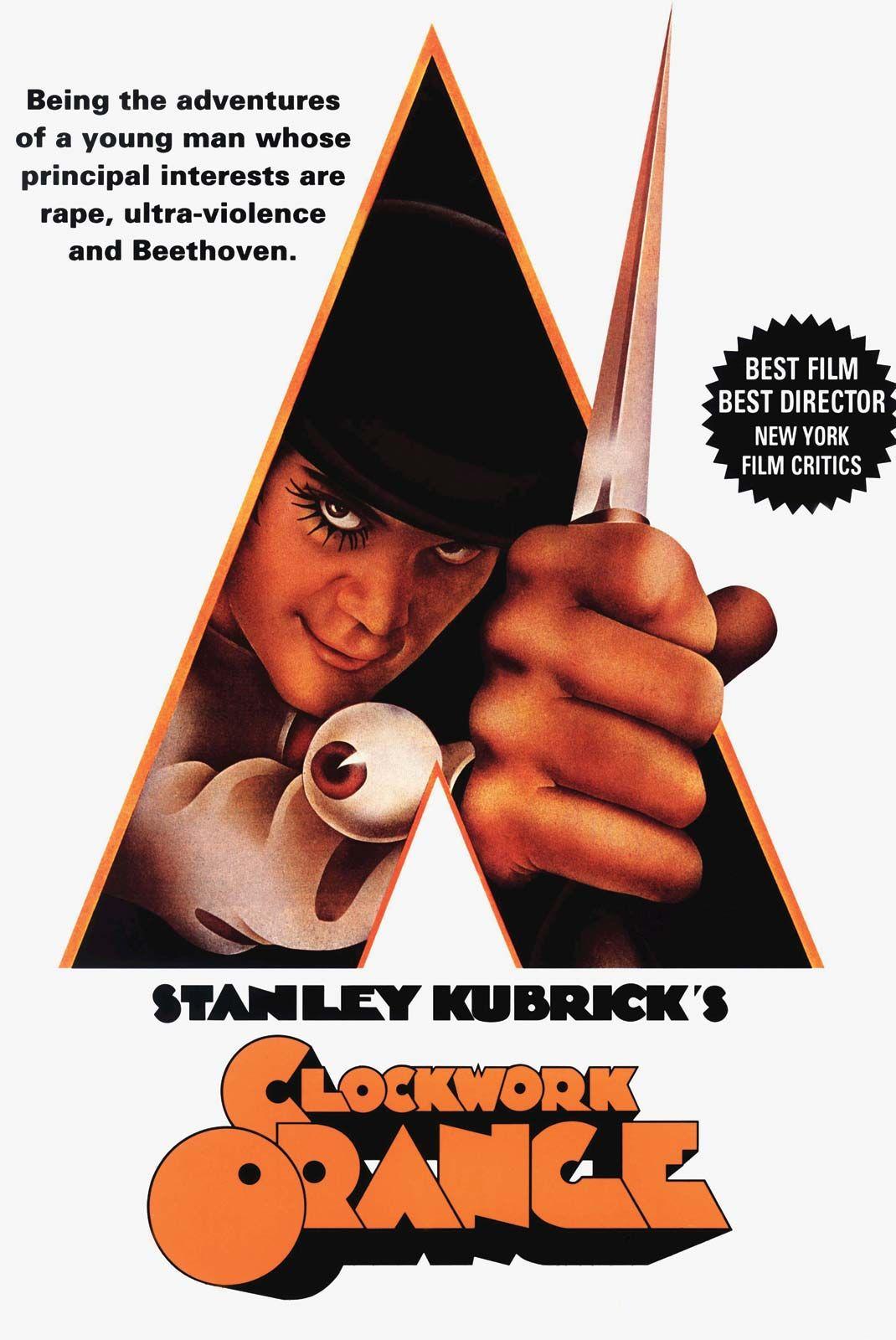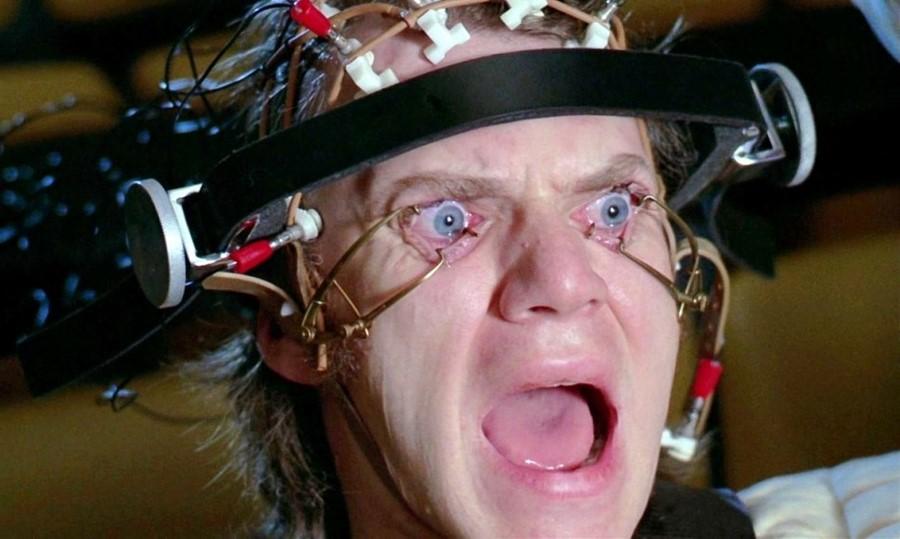In the dimly lit theaters of the early 1970s, audiences were introduced to a cinematic experience that was as mesmerizing as it was unsettling. “A Clockwork Orange,” Stanley Kubrick’s audacious adaptation of Anthony Burgess’s dystopian novel, emerged not just as a film but as a cultural phenomenon, sparking debates that continue to echo through the corridors of both cinematic and ethical discourse. The film’s kaleidoscope of violence, juxtaposed with hauntingly beautiful classical scores, presents a paradox that challenges viewers’ perceptions and moral compasses. As we delve into the question of whether “A Clockwork Orange” desensitizes its audiences to violence, we embark on a journey that navigates the complex interplay of art, psychology, and societal impact. This exploration seeks to unravel the intricate tapestry woven by Kubrick, examining how the film’s provocative content might influence the very nature of our empathy and understanding of violence.
Exploring the Impact of Cinematic Violence on Viewer Sensitivity
Stanley Kubrick’s “A Clockwork Orange” serves as a provocative exploration into the psychology of violence and its effect on the human psyche. The film’s graphic depictions of brutality have sparked debate over whether it numbs viewers to real-world aggression. While some argue that its exaggerated violence fosters a critical distance, allowing audiences to confront the darker aspects of human nature, others suggest that repeated exposure may dull emotional responses.
- Emotional Blunting: Regular exposure to on-screen violence might lead to decreased sensitivity to similar acts in reality.
- Normalization of Aggression: Over time, extreme portrayals could shift perceptions, making violent behavior appear more commonplace.
- Cathartic Release: Conversely, some viewers may experience a release of pent-up emotions, finding a safe outlet for aggression through fiction.
Understanding the impact of such content is crucial, as it shapes societal attitudes towards violence. The film’s unique approach challenges audiences to reflect on their own boundaries and the ethical implications of media consumption.

Unpacking the Psychological Responses to A Clockwork Orange
Stanley Kubrick’s film adaptation of Anthony Burgess’s novel has long been a topic of heated debate, particularly concerning its impact on viewers’ emotional and cognitive processing of violence. The film’s visceral imagery and unsettling narrative thrust audiences into the chaotic world of Alex DeLarge, leaving them grappling with their own moral compass. Some argue that by presenting violence in a stylized, almost operatic manner, the film may inadvertently lead to a level of emotional detachment or even desensitization. The juxtaposition of Beethoven’s music with scenes of brutality creates a surreal experience, challenging viewers to reconsider the boundaries between art and atrocity.
On the other hand, the film also acts as a mirror, reflecting the dark corners of human nature and societal flaws. It compels audiences to question the ethical implications of conditioning and free will. Through its unsettling narrative, viewers may experience a range of psychological responses:
- Shock and Discomfort: The explicit depiction of violence can evoke a visceral reaction, making viewers confront the raw reality of aggression.
- Empathy and Reflection: By identifying with characters, audiences might gain insights into the complexities of human behavior and societal influence.
- Moral Ambiguity: The film blurs the lines between right and wrong, prompting introspection about justice and retribution.
Ultimately, the psychological impact of “A Clockwork Orange” hinges on the individual’s interpretation and the societal context in which it is viewed, making it a perpetual topic of academic and cultural exploration.

Balancing Artistic Expression and Viewer Responsibility
In the realm of art, creators often grapple with the delicate balance between expressing bold, sometimes unsettling ideas and the potential impact these portrayals might have on their audience. Stanley Kubrick’s ”A Clockwork Orange” is a prime example of this conundrum. The film, with its vivid depictions of ultraviolence, raises questions about whether such artistic expression serves to desensitize viewers to real-world violence. Artists must consider the following:
- The intended message behind the graphic content. Does it serve a purpose beyond shock value?
- The audience’s perception. Are viewers interpreting the material as a critique of violence, or as an endorsement?
- The context within which the violence is presented. Is it glorified or depicted as a social ill?
Viewers, on the other hand, bear a certain responsibility in engaging with such content. It becomes essential for them to:
- Critically analyze the material, questioning its underlying themes and intentions.
- Reflect on their emotional responses to the film, considering whether it alters their perception of violence in reality.
- Engage in dialogue with others to explore different interpretations and understandings.
In this intricate dance between creator and audience, the responsibility is shared, ensuring that art remains a powerful medium for reflection and conversation rather than a tool for desensitization.

Recommendations for Media Consumption and Critical Engagement
Engaging with a film as provocative as A Clockwork Orange requires a nuanced approach to media consumption and critical engagement. Viewers are encouraged to approach the film with an open mind, considering its historical context and the filmmaker’s intentions. It’s important to question how the depiction of violence serves the narrative and what it reveals about human nature and societal structures. By doing so, audiences can explore the deeper philosophical questions posed by the film rather than simply focusing on its visceral imagery.
- Contextual Analysis: Research the era in which the film was made to understand its commentary on contemporary social issues.
- Character Examination: Analyze the motivations and transformations of the protagonist, Alex, and what they signify in the broader narrative.
- Symbolic Interpretation: Consider the symbolism used throughout the film, such as the recurring motifs and their implications.
- Comparative Viewing: Watch other films by Stanley Kubrick to appreciate his stylistic choices and thematic preoccupations.
By employing these strategies, viewers can foster a more profound and critical engagement with A Clockwork Orange, transforming the experience from mere consumption to a thoughtful exploration of its complex themes.
In Summary
As the final chimes of our exploration echo into silence, we are left to ponder the intricate dance between art and audience. ”A Clockwork Orange,” with its unsettling blend of brutality and brilliance, serves as both a mirror and a magnifying glass, reflecting societal anxieties while amplifying questions about the nature of violence and its portrayal. Whether it desensitizes or sensitizes, numbs or enlightens, remains an individual journey through the labyrinth of one’s own psyche. As we close the pages on this inquiry, we are reminded that the power of art lies not in its answers, but in its ability to provoke questions that linger long after the curtain falls. the interpretation rests not in the hands of the creator, but in the eyes of the beholder, challenging us to confront the uncomfortable and seek understanding within the chaos.
